
Guests
- Betsy PhillipsNashville historian and journalist, author of Dynamite Nashville: Unmasking the FBI, the KKK, and the Bombers Beyond Their Control.
We speak with historian and journalist Betsy Phillips about her new book, Dynamite Nashville: Unmasking the FBI, the KKK, and the Bombers Beyond Their Control. She spent nearly a decade trying to uncover the truth about three bombings in Nashville by segregationists in the civil rights era that all went unsolved: the Hattie Cotton School in 1957 as it was set to integrate; the Jewish Community Center in 1958, which had held integrated activities; and the home of leading civil rights lawyer and city councilmember Z. Alexander Looby in 1960. In the book, Phillips writes, “Just as Nashville was where Civil Rights icons like John Lewis, James Lawson, and Diane Nash began, Nashville is also where a network of racial terrorists began.” She discusses her revelations, the lasting impact of the attacks, and how Nashville’s mayor has announced a cold case review.
Transcript
AMY GOODMAN: This is Democracy Now!, democracynow.org, The War and Peace Report. I’m Amy Goodman.
We’re joined now in Nashville, Tennessee, by Betsy Phillips, journalist, historian, author of the new book Dynamite Nashville: Unmasking the FBI, the KKK, and the Bombers Beyond Their Control. She spent nearly a decade trying to uncover the truth about three civil rights-era bombings in Nashville that all went unsolved: the Hattie Cotton School in 1957, as it was set to integrate; the Jewish Community Center in 1958, which had held integrated activities; and the home of leading civil rights lawyer and city councilmember Z. Alexander Looby in 1960. In the book, Phillips writes, quote, “Just as Nashville was where Civil Rights icons like John Lewis, James Lawson, and Diane Nash began, Nashville is also where a network of racial terrorists began.”
Dynamite Nashville's revelations moved Nashville's mayor to ask police to reopen investigations into the attacks this month. Around the same time, neo-Nazis marched through Nashville’s downtown for the third time this year and yelled racist slurs at a group of Black children. That’s right, grown white men, some carrying American and Confederate flags, were caught on a viral video hurling racial slurs at a group of five Black children who regularly play music downtown. The men used a version of the N-word almost a dozen times, in addition to other slurs. The children’s parents spoke out last week along with the kids who were assaulted. This is 10-year-old Detonio Wilson and his mother sharing the advice she gave him.
DETONIO WILSON: I feel like it was racist because they were just saying bad words to us, and the police didn’t do nothing. They were just telling us to go home.
ASHTON LEE: Don’t leave it stuck in the back of your minds like that, because it will mess you up tremendously, like for a long time.
AMY GOODMAN: They were speaking at a podium that said “Protect Black kids.”
For more, we’re joined by Betsy Phillips, journalist, historian, author of this new book, Dynamite Nashville: Unmasking the FBI, the KKK, and the Bombers Beyond Their Control.
Welcome to Democracy Now! For your reporting, Betsy, you went through archives, requested records from the FBI, had a lot of trouble, and much more. I’m wondering if you can take us — follow a trajectory, from these neo-Nazi marches this year in downtown Nashville to the three unsolved bombings by segregationists in the civil rights ear.
BETSY PHILLIPS: Sure. It’s actually very straightforward in a way that I found disturbing and disheartening. But in the 1950s in Nashville, Vanderbilt professor and poet Donald Davidson ran what I called an erudite hate group for, like, high-class people who didn’t want to be associated with the Klan, but then they would funnel money to Klansmen and other, you know, low-class white terrorists who got arrested or, you know, in any kind of trouble. They were there to support them.
Donald Davidson’s right-hand man was a man named Jack Kershaw, who’s probably best known — for anybody who’s been to Nashville, we used to have that really hideous and weird statue of Nathan Bedford Forrest out on the freeway. He sculpted that. He also, after learning this method of, you know, hiding rich white people’s involvement with the Klan and their activities, he went on to start the League of the South, which started out — or, ostensibly started out as just a group of, like, eccentric Southern pride people. And then he helped them format the same kind of funding mechanism.
So, they funneled money to the racists at Charlottesville. So it is like a direct — this funding mechanism that was worked out here in Nashville in the ’50s was behind the death of Heather Heyer, you know, a few years ago.
AMY GOODMAN: And just to be clear, Nathan Bedford Forrest was the first grand wizard of the Ku Klux Klan.
BETSY PHILLIPS: Yes.
AMY GOODMAN: So, Betsy, 1950s, ’57, ’58, 1960, lay out what happened in these three unsolved bombings, and what it took for you to, as an independent journalist, try to get to the bottom of this and today find accountability, that has led the mayor to call for an investigation.
BETSY PHILLIPS: Right. Well, one of the reasons that I’m really excited about the mayor reopening these investigations is that the Nashville police can do something now that Nashville police in the '50s could not do, which is make a bunch of long-distance calls. So, one of the biggest, like, impediments to solving these cases back in the day, and one that I, you know, just because I have email, could easily overcome, is that I could contact Florida and see what records they had. I could easily email Birmingham and see what they had. And that's just not something that was really possible in the 1950s.
So, while everybody — like, throughout the South, they knew that there was this group, the Confederate Underground, because after they bombed something, they would call and take credit. So, municipalities throughout the South wanted the FBI to step in, because they’re like, “You have funding, and you have the ability to do these kind of interstate investigations. And look, they’re using the same name throughout the South for both these bombings of Black institutions and bombings of Jewish institutions. So, you figure out who they are, and we’ll stop them.” And the FBI just repeatedly was like, “No, these are local matters. They’re unconnected. They don’t have anything to do with each other.” And so, they were just able to continue their activities. And, you know, members of this network were even present in Birmingham in the week before the 16th Street Baptist Church bombing. So, you know, the implications of not catching them while they were in Nashville were enormous for the nation. But —
AMY GOODMAN: So, let’s get real specific. Of course, the —
BETSY PHILLIPS: Sure.
AMY GOODMAN: — Birmingham bombing was 1963 in Alabama. Let’s start with the Hattie Cotton School in 1957 that was set to integrate. What happened?
BETSY PHILLIPS: Yes, right. So, John Kasper, who was a racist activist, had been in town all month basically fomenting discord. And racists throughout the South, like Asa Carter, for instance, and Bill Hendrix from down in Florida, had come up to help him. The FBI heard from an informant, “Hey, these guys have dynamite. They’re building a bomb.” And then they heard again from the informant, “My friend has seen the dynamite.” The FBI did not share this with the Nashville police.
So, the day of school integration, protesters went to all the schools that they knew were integrating. No one knew ahead of time that Hattie Cotton was integrating, because Patricia Watson’s family didn’t preregister her. They just registered her the day of. So, Hattie Cotton didn’t have the same kinds of police presence that these other schools had. And that evening, when — after the first day of school, when police were trying to figure out, you know, like, “Well, where do we need to be? What do we need to be keeping an eye on?” they only went to the schools where there had been mild riots — I don’t know how to better put that — demonstrations that day. And since there hadn’t been demonstrations at Hattie Cotton, they left it a sitting duck. So, that night, at right about just after midnight, the school blew up. The whole east wing was blown up.
And then, in the aftermath of that, one of the things that got me hooked on this, where I was like, “Whoa, this is much more complicated than I realized,” because in the FBI records, they talked about, like, “We have these witnesses. We are not sharing them with the Nashville police.” And then, in the FBI file, there’s a memo outlining, like, “Yes, we had this information. Here’s when we had it. Blah, blah, blah.” And someone had crossed through “September 10th,” the day of the bombing, and backdated it so that it looked like they had informed the Nashville police before the bombing that they knew that there was dynamite in town and this bombing plot. So that’s when I was like, “Well, clearly this is a bigger story than just like, you know, racists blow up a school. Like, they’re — you know, why is the FBI behaving this way? Why is the Nashville police behaving this way?” And then, as I’m going through the FBI file, towards the end of the file, I find a report that the FBI is hearing from an informant who did the bombing. And I’m like, “Wait.” So, they had a name, or two names, actually, by the beginning of 1958, and yet these bombings are still unsolved.
And then, when you fast-forward to the JCC, or the Jewish Community Center, in Nashville itself, that bombing is not really thought of as being one of these civil rights bombings. Like, people know about Hattie Cotton, and they know about the Looby bombing, but they haven’t really been viewing the JCC as part of that, even though, after the JCC blew up, the bombers called the AP, The Tennesseean, the rabbi, Silverman, from The Temple and said, “We have just blown up your center of integration. And next we’re going after the judge who approved Nashville school desegregation.” So, these bombers tried to make it as clear as possible that the JCC bombing was related to school integration, but somehow that’s kind of fallen out of the collective knowledge.
But when I found that out and I found that they called themselves the Confederate Underground, not only did that lead me to a bunch of Confederate Underground bombings throughout the South — Charlotte, Gastonia, Jacksonville, Miami, Birmingham, Atlanta, so on — I also found that in — so, the Confederate Underground said, you know, “We’ve just blown up your center of integration. Next is Judge Miller. And then we are going to blow up The Temple in Belle Meade.” In 1981, a group calling itself the Confederate Vigilantes tried to blow up The Temple. So I went to talk to the head of the Confederate Vigilantes, Gladys Girgenti, to ask her if the Confederate Vigilantes and the Confederate Underground were related. And apparently, weirdly enough, I was the first person to ever do that, even though she was extensively interviewed by the FBI and the police.
So, I spoke with the U.S. attorney who had prosecuted her. And again, this is just like a matter of technology and the difference, right? Because I was easily able to google Gladys, and I was able to easily learn that she grew up here. But the U.S. attorney who tried her thought she was from Detroit, because that’s where she and her second husband had lived for most of their married life. So he had never even thought to connect her to the bombings here, because, as far as he knew, she didn’t live here. So, you know, that, again, like, in many ways, there were difficult things, but it was much easier for me to investigate these crimes just because, like, I have Google, and police and the FBI back then didn’t.
And then, the third bombing, of course, is the bombing of Z. Alexander Looby’s home in April of 1960. This, to me — the other two bombings, I have a pretty good idea of who did them. This bombing was the most difficult to solve — well, solve, and I don’t think that I have it 100% solved. But it definitely left like the least clues. And yet, he was a sitting city councilman, so he was an active U.S. politician who someone tried to assassinate. You’d think that this would be something that people would want solved, just because they would want to know, if they were also politicians, if they were in danger.
AMY GOODMAN: Betsy, I want to play a clip of the civil rights activist John Lewis, who would later serve —
BETSY PHILLIPS: Yes.
AMY GOODMAN: — 17 terms as a Georgia congressmember, has said the Civil Rights Act and the Voting Rights Act were written, quote, “with our blood.” In a 1979 interview for the documentary They Loved You Madly, John Lewis spoke about that morning that you’re describing right now, April 19th, 1960, and the bombing of the Nashville home of the civil rights lawyer Z. Alexander Looby.
JOHN LEWIS: Well, it was early one morning, about 6:00, Z. Alexander Looby, who had been a strong supporter and defender of civil rights, a member of the City Council, the first Black member of the City Council in the city of Nashville, was a NAACP Legal Defense Fund lawyer and had been the legal counsel for all of the students that had participated in the sit-in, and brought some of the original school desegregation cases and worked with Thurgood Marshall — we heard that his house had been bombed.
And all across the city, on the different college campuses, we had a similar reaction: to call a meeting of the Nashville Central Committee. The Central Committee was the executive committee of the Nashville student nonviolent movement. By, I would say, between 6:30 and 7:00, we were meeting. Shortly after 7:00, we had sent the mayor a telegram saying to the mayor that we will have a march on City Hall — and the mayor was Ben West, was the mayor’s name — to protest the bombing of attorney Looby’s house. By noon, we had more than 5,000 students, from Tennessee State, Fisk University, American Baptist Theological Seminary, Meharry and Vanderbilt and people from the community with a sense of righteous indignation.
AMY GOODMAN: John Lewis later became a congressmember representing Atlanta. When the march reached City Hall that day, activists confronted the mayor about the violence and asked if he believed it was morally wrong for the lunch counters in Nashville to be segregated. The mayor agreed it was wrong, and negotiations led six downtown stores to begin serving Black customers at their lunch counters for the first time the following month. And John Lewis, this was his first, as you said, coming out of Nashville — he wasn’t born in Nashville, but this was his first major action, were the Nashville sit-ins of 1960. And in the middle of this, yet another, like your title, Dynamite Nashville, bombing of this attorney. So, Betsy Phillips, you are naming names. You are getting this information decades later, and you’re talking about reading the FBI documents. Talk about how you got them and the fight to get them, the resistance of the FBI.
BETSY PHILLIPS: Right, right. So, luckily, I, very early on in my research, ran into Rachel Martin, who’s the author of Hot, Hot Chicken and then a book, whose name escapes me right now, of course, about the Clinton bombings. So, she told me very early on, like, “Start doing your FOIA, your Freedom of Information Act, requests right now, because the FBI is going to jerk you around,” which I appreciate. It was just more true than I could know.
So, I submitted a FOIA request for the file on the Looby bombing, and they told me that it had been destroyed. Now, at the time, I believed them, because, you know, they’re the FBI, and they told me they destroyed a file. So I set out to just try to figure out under what circumstances the FBI destroys files, because I was like, “OK, well, I want to understand what the criteria is.” So, for two years, I kind of just sat on that, was trying to, like, figure out, “Well, who can I ask about this? Who would know?”
I stumbled across the Keel Hunt, who was Governor Lamar Alexander’s right-hand man and had been, you know, in touch with him throughout the years. So, when Lamar Alexander went to D.C. as senator, of course, you know, Keel remained in the know. I asked Keel, you know, “Why would the FBI do this?” And he’s like, “Let me give you a number. Hal Hardin will answer,” Hal Hardin being the U.S. attorney during this time. So I called up Hal Hardin. I told him, “Keel Hunt gave me your number. And the FBI is telling me they destroyed these files.” And Hal Hardin is like, “Oh, I don’t believe it.” And he’s like, “They wouldn’t. They just wouldn’t do that.” He’s like, “So, you call down to John Lewis. You tell him.” I’m like, “Who am I to be calling John Lewis? Like, what is happening?”
But I called down to John Lewis’s office, and I spoke with the woman who, like, oversaw civil rights stuff for him. And she very slowly and deliberately was like, “We cannot open an inquiry into the FBI for you. You’re not our constituent.” And I was like, “Oh, no, no, no. I don’t need to open a query. I just want to understand.” And she’s like, “You cannot ask” — and I was like, “Oh, OK, I get it.”
So, I immediately sent an email to Congressman Jim Cooper’s office. And his right-hand person, Lisa Quigley, got back to me almost immediately, saying, like, “Jim’s in. Send us everything, all your correspondence with the FBI.” And then he sent a letter to Christopher Wray, the head of the FBI, and was like, “I want to understand why this file was destroyed. And even if you have to give me a classified briefing, consider this my request for a classified briefing.”
And then, miraculously, the file magically wasn’t destroyed. It was at the National Archives. So, then I had to wait another three, three-and-a-half years for it. You know, there was COVID, and then it had to go through a review and all this stuff. And it was finally — like, the book was in production when the file came. So I had to be, like, “Wait, wait, wait. Time out. I need to go back and, like, rewrite a few things to include this information from the file.” But there were a lot of files that the FBI told me that they had destroyed. And now, of course, I don’t have any way to know if that’s actually true.
AMY GOODMAN: Betsy Phillips, did COINTELPRO fit into this picture, the FBI’s Counterintelligence Program?
BETSY PHILLIPS: Right. I think this was slightly before that. But this is definitely a precursor to that. This is — you know, one of the things that I think is going on in the Looby bombing is, I think, at the least, you could say the FBI wasn’t sure if their informant wasn’t the bomber. So, part of, I think, what we’re seeing in terms of the cover-up of the Looby bombing is just that the FBI was like, “Oh man, if people dig into this and they find that it was our informant, that’s going to be, you know, real bad.” And I think even now the thought may be, like, there’s never a good time for it to come out that your organization might have tried to kill a U.S. politician. Like, that’s something that people are going to want an explanation for. So I suspect that the FBI’s strategy, to the extent that they had one, was just, like, this doesn’t — it doesn’t exist anymore.
AMY GOODMAN: So, Betsy, tell us about J.B. Stoner, a suspect in the Nashville bombings, perhaps best known as one of James Earl Ray’s lawyers — James Earl Ray —
BETSY PHILLIPS: Right.
AMY GOODMAN: — the man who assassinated Dr. Martin Luther King.
BETSY PHILLIPS: Right, yeah.
AMY GOODMAN: Talk about his connections.
BETSY PHILLIPS: Right. So, J.B. Stoner was a Chattanoogan who rechartered the Klan when he was in high school. He was also pen pals with like an actual Nazi, which is one of the reasons I don’t like to use the term “neo-Nazi,” because there’s no — there’s no break, right? Just these are just Nazis.
Stoner, at the time I’m looking at, seems to have been operating as someone somewhat of a, like, terrorist consultant. So, if you were a local Klan group that wanted to bomb a school or a church or whatever, rather than you having to go around practicing, you know, placing bombs or building bombs, which would have opened you up to potentially getting caught before you could hit your target, you could just call in Stoner, and he would walk you through how to build a bomb. He had connections that would bring you in dynamite. If you didn’t have somebody on your team who was willing to actually do the bombing, as long as you supplied a driver, he would even — he could supply a bomber.
So, I started looking, you know, just all of the places that he pops up. And at some point — and I think it is because of what he learned in Nashville helping with these bombings — he also then went to law school. So, by the time you get into the ’60s, what you see is that all the violence that J.B. Stoner is helping direct, if you got caught, then he could step in and represent you. So it was like a one-stop shop for evil.
AMY GOODMAN: So, at your book launch, Betsy Phillips, for Dynamite Nashville, the Nashville mayor, Freddie O’Connell, announced he’s opening —
BETSY PHILLIPS: Yes.
AMY GOODMAN: — an investigation. Now, what exactly would this include? And are any of the people you’re talking about still alive today?
BETSY PHILLIPS: Right. Nobody that I’m talking about, with the exception of maybe a man named Slim Thompson, who I couldn’t find much information about — everybody else that I’m talking about is indeed dead.
But what the mayor has asked the police department to do is to reopen the cases. They’ve just assigned a cold case detective to really look at everything. So, that’s part one of his initiative, which I’m very excited about, like I said, just the fact that they’ll be able to make phone calls.
And even though I think, like, the direct bombers are probably all dead, I think that it is very likely that some of the people who helped them are still around, and, for sure, some of the people who were deeply affected by these bombings are still alive. You know, the 6-year-olds who desegregated Nashville schools in 1957, you know, like, they’re just in their late sixties now. So, you know, like, they’re still around, and answers will matter to them.
But then, the other thing that the mayor has asked the city to do is to come up with, like, better protocols for how to handle documents, because all of the police files in town from before 1963 are missing. So, one of the biggest obstacles to my research was just that those police files, like, at large, didn’t exist. And, in fact, the Nashville police files that I was able to find, by and large, came from Birmingham, because Bull Connor, you know, in trying to coordinate to solve these bombings, they were trading information, and he kept everything.
AMY GOODMAN: And knowing this history, I mean, as Kamala Harris says, or it’s all over TikTok, you know, these — what do you call them? The white nationalists, the modern-day KKK guys, the folks who are walking down the streets right now of Nashville didn’t fall out of coconut trees. You’re providing —
BETSY PHILLIPS: Right.
AMY GOODMAN: — this incredible history. And I’m wondering if you could end by elaborating more on the story of the FBI paying informants, who then used this money to keep going, to keep bombing? And what the FBI said about this at the time, as they understood — how much did they understand what exactly was going on? Tell us, like, a little more about Gladys.
BETSY PHILLIPS: Right. Right. So, when I talked to Gladys, one of the things that I asked her — because I noticed in the FBI files, like, it just seemed like everybody was an informant. But my understanding from, you know, popular culture was, if you were in the Klan and you were an FBI informant, you were risking your life, right? That this was some brave thing that you were doing, because you might get killed if you were discovered. When I mentioned this to her, she actually laughed at me, which took me aback. But she said, “Oh no, honey, we all were informants, because the money was good, we were broke, and it was tax-free.” And I looked into it. And yes, indeed, if you are paid to be an FBI informant, that is tax-free.
So, basically, what she said how it worked in her group is that you just had to let the KKK, your local chapter, know that now it was your turn to be an informant, and they would keep you away from, like, the real, you know, bad stuff that they were doing, so that you couldn’t, you know, let something slip to the FBI. And she said that as long as you only told the FBI stuff that they could figure out some other way, it was fine. Like, nobody held it against you. You know, like I said, it was good money. But so, what this meant was that they were then taking this money that they were all getting from the FBI to inform the FBI, and they were dumping it back into running the Klan.
This also paired with the fact that I found a memo from Hoover himself stating that they were running the Klan in Tennessee, by at least 1965. And his reasoning was, if they were running the Klan, they could encourage it to be less violent. So, that was his justification of, like, you know, “We’re keeping violence down. We’re keeping these guys focused on things to do that don’t disrupt society,” blah, blah, blah. But, like, what I found in my research is that, repeatedly, every time the, like, main Klan got less violent or less, you know, organized or whatever, that there would be these breakaway groups, like J.B. Stoner’s, like Asa Carter’s. And they, because they weren’t made up of all of the people who were disgruntled that the main Klan wasn’t willing to, like, go as far as they thought it needed to go, they were really violent and really dangerous.
So, one of the things that has just weighed heavy on me and that I’m hoping we maybe can talk about as a whole nation, as corny as that might sound, is, like: Is this approach that the FBI is using, is it hurting or helping? Because, like, one of the things that Gladys told me that haunts me is, she feels like she won, even though she went to prison, because before the government provided her with a bomber, even though that bomber was their guy and an informant and he built a dud bomb, but she was not able to even, like, get her plan in motion, because she didn’t have a bomber. So, they gave her a bomber, and she was able to put a bomb at The Temple. So, even if — and it didn’t go off. But even though it didn’t go off, she still succeeded in terrorizing Nashville’s Jewish population, right? Like, she didn’t get like 100% of her plan, but she got 75%.
AMY GOODMAN: And explain that Temple, because she’s not included in the book.
BETSY PHILLIPS: No, right. Well, I talk about her just because I didn’t think there could be that many racist bombers in Nashville, so I thought they must know each other. And she was the head of the Confederate Vigilantes, who I talked about earlier. So, I just thought Confederate Vigilantes, Confederate Underground. And when I went to talk to her, she did know everybody. She had been great friends with J.B. Stoner and had known him for years. She was great friends with David Duke. Like, she just — like, she knew everybody. And when I asked her, like, “Hey, has anybody asked you ever before about your connections with these other people?” she said, “No, you’re the first person.”
AMY GOODMAN: And explain The Temple, what it was.
BETSY PHILLIPS: Right, yeah. So, The Temple was the Jewish temple in Belle Meade. So, it’s the largest Jewish congregation in town. And they’re — at the time of, like, the bombings that I’m looking at, they were doing some integration work. And they were who was threatened when the JCC blew up, when the Confederate Underground called and said, “Next is The Temple.” They meant The Temple in Belle Meade, which is also why it was suspicious that Gladys might have seen herself as a continuation of those earlier bombings, since her target was also The Temple, when there are many, many other, you know, Jewish synagogues and temples and stuff in town that are much easier to get to.
AMY GOODMAN: Betsy Phillips, as we wrap up, what shocked you most, although I assume it was just a series of shocks, but as you wrote your book, Dynamite Nashville?
BETSY PHILLIPS: Right, right. For me, I think the most shocking thing and the one thing that I still cannot explain is that I discovered that Ben West actually conducted the investigation into the Looby bombing. He, the mayor of Nashville, not a police officer, just a mayor, interviewed witnesses, collected evidence. He was at the scene that morning. So, like, one of the most baffling things to me, but also, like, that will stick in your brain, is that that means that when John Lewis was talking about sending a telegram to West, when you consider, like, where the head office of the sit-in movement was, was across the alley from Looby’s house — so, John Lewis could have just walked out and yelled, “Hey, Ben West, we’re coming to the” — you know? But they didn’t know that he was there. But so, they must have both left north Nashville at the same time to go have this dramatic confrontation down at the courthouse. But I firmly believe that probably one of the reasons that Ben West was finally like, “No, I just can’t stick with this,” is because he had spent all morning listening to witness statements.
AMY GOODMAN: So he knew.
BETSY PHILLIPS: Yep.
AMY GOODMAN: And what did he —
BETSY PHILLIPS: The mayor —
AMY GOODMAN: Explain exactly what he did with that information, Mayor West, Nashville Mayor West.
BETSY PHILLIPS: Right. I have no idea. I couldn’t find his papers, couldn’t make connections with his relatives. My suspicion is that by that point, by 1960, the trust between the FBI and the Nashville police was nonexistent. And certainly, I have reason to suspect that Nashville knew that the FBI had an informant in the KKK in Nashville.
So, what I suspect is that Mayor West thought that there just never was going to be justice, like that the FBI wasn’t actually going to step in and, like, solve this bombing, and that he wanted to at least have a sense of what happened, so that he would know, like: Are any of the rest of us in danger? But I think that that is — I think he just knew, instantly knew, that it wasn’t going to be solved, like, officially. And he stepped in to at least make sure that he understood what was happening on the ground.
AMY GOODMAN: And finally, I mean, it was in Tennessee, not in Nashville, but in Memphis, eight years later, when Dr. Martin Luther King was assassinated, a target —
BETSY PHILLIPS: Yeah.
AMY GOODMAN: — of the FBI. J. Edgar Hoover obviously despised him —
BETSY PHILLIPS: Yeah.
AMY GOODMAN: — targeted him. What kind of connections as — I mean, you talked about Stoner representing the assassin.
BETSY PHILLIPS: Right.
AMY GOODMAN: But what kind of connections did you see leading up to that, that you could identify in your city of Nashville?
BETSY PHILLIPS: Right. Well, one of the things that — so, J.B. Stoner was actually one of the first regionwide — there had been — like, local people wanted to kill King, who lived in the same towns as King. But J.B. Stoner and his friend Jack Brown — not to throw another name into the mix — but J.B. Stoner and Jack Brown were the first two, like, regionwide people, who didn’t have like a direct connection to King, who had plots to kill King. Stoner’s plot was in 1958. And then, Jack Brown told a friend in 1960 that he had been traveling from Chattanooga to Atlanta to try to figure out, if he shot King, how could he get out of that neighborhood alive.
So, to see Stoner’s name continue to pop up in these circles, and then, like — you know, what I heard is that after King was killed in Memphis, that FBI informants were sitting in a room with Stoner, who was in Jackson, Mississippi, at the time. And before the news had hit, the phone rang. Stoner picks it up. And he’s like, “Oh, good. He’s a good one now, a good N-word now,” and then hung up. And then they heard the news that King had been killed. But the FBI’s contention has always been that J.B. Stoner wasn’t involved because he wasn’t in Memphis. But one of the things that I found in my research is that Stoner, like, early on, he was directly involved with bombings, but very quickly he came the week before, he set things up, and then he left town. So, the fact that Stoner wasn’t in town for — you know, in Memphis for the assassination means nothing about whether or not he was involved.
So, that was, you know, very shocking to me to realize, like, again, like, if these folks had been dealt with when they were in Nashville, before they were getting really good at committing violence and getting away with it, the ’60s would have just looked a lot different.
AMY GOODMAN: Well, Betsy Phillips, I want to thank you so much for being with us, a journalist and historian, author of the new book about three unsolved bombings by segregationists in the civil rights era, Dynamite Nashville: Unmasking the FBI, the KKK, and the Bombers Beyond Their Control. And we’ll continue to follow what comes of this new investigation that has been called for by the mayor of Nashville. Thanks so much, and thanks for your work.
BETSY PHILLIPS: Yeah. Thank you for having me.
AMY GOODMAN: This is Democracy Now! I’m Amy Goodman. Thanks for joining us.

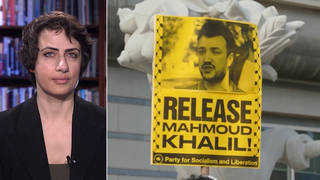
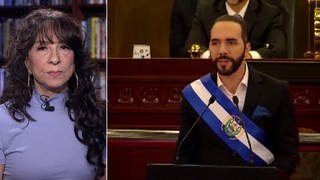
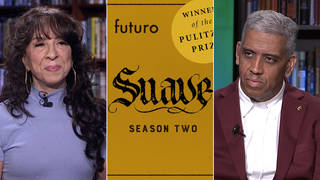
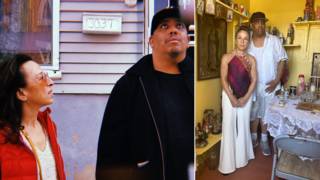
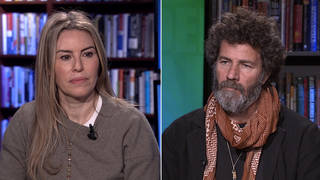
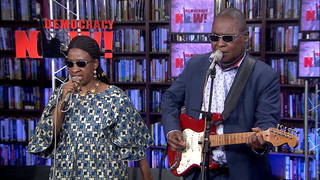
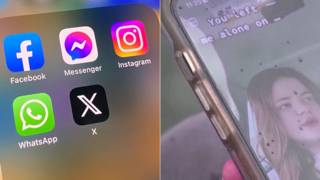

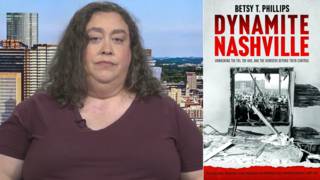

Media Options